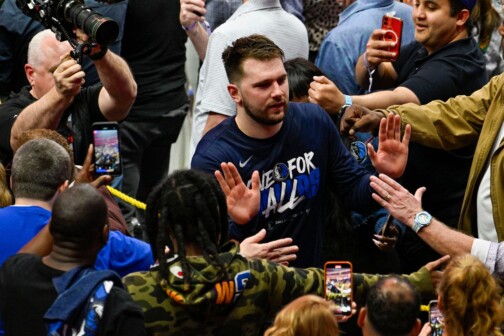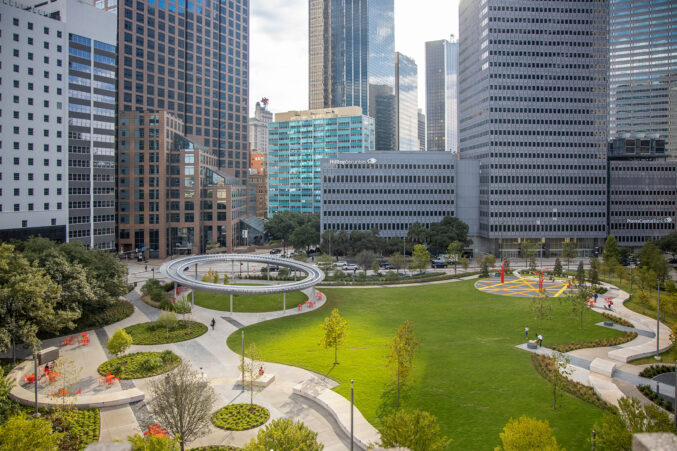The Dallas Museum of Art announced today a new $17 million gift from the Marguerite and Robert Hoffman Fund to support acquisition of European Art Before 1700. The grant will nearly double the DMA’s existing acquisition endowment and gives the museum one of the largest endowments specifically dedicated to Old Masters.
The gift also indicates Museum Director Maxwell Anderson’s interest in strengthening the DMA’s collection of European art and antiquities. Last year, Anderson brought a painting by Leonardo da Vinci to the museum to try to generate interest in purchasing a trophy work by an Old Master. Now the museum will enjoy a $3.4 million operating endowment specifically allocated primarily towards art from the Renaissance and Baroque eras.
“Marguerite Hoffman’s incredibly generous gift,” Anderson said, “creates an extremely exciting opportunity for the DMA to build our collection of European art in unprecedented ways.”
The collection of Hoffman and her late-husband Robert was bequested to the museum. Here is the full release:
Dallas Museum of Art Announces New $17 Million Marguerite and Robert Hoffman Fund for European Art Before 1700
Museum to Have One of the Nation’s Largest Endowed Funds for Acquisitions and Care of Old Master Paintings and European Sculpture
The Dallas Museum of Art today announced a major gift from DMA trustee and past chairman Marguerite Steed Hoffman that was conceived to expand and enhance the Museum’s collection of European art, primarily of the Renaissance and Baroque eras, through the establishment of a $17 million endowment.
The gift creates a $13,600,000 restricted acquisitions endowment and a $3,400,000 operating endowment in support of pre-1700 European acquisitions, exhibitions, and programs. This new fund more than doubles the DMA’s acquisition endowment and brings total funds in support of the Museum’s acquisitions to 50,000,000.
“Marguerite Hoffman has done what few other American museum trustees have done,” said DMA chair Deedie Potter Rose. “She has significantly elevated our stature and potential as a collecting institution with one remarkable gift.”
Maxwell L. Anderson, The Eugene McDermott Director of the Dallas Museum of Art, added, “Marguerite Hoffman’s incredibly generous gift, in her name and that of her late husband, Robert, creates an extremely exciting opportunity for the DMA to build our collection of European art in unprecedented ways.”
The European collection of the Dallas Museum of Art is particularly strong in late 19th- and early 20th-century works, with the most significant collection of French impressionism and post-impressionism in the region. But its collection of old master paintings is comparatively modest. A recent fundraising campaign culminating in an offer to purchase Leonardo da Vinci’s Salvator Mundi (c. 1499–1512), while not accepted, encouraged Mrs. Hoffman to make this gift in support of the DMA’s collection.
“There is no greater pleasure for me than to help the DMA strengthen its already remarkable collection,” Mrs. Hoffman said in announcing the gift. “The Museum deserves the resources to increase the scope of its European holdings, and I am honored to be able to do this for the Museum and the people of Dallas on behalf of Robert and myself.”
Even prior to this gift, Marguerite and Robert Hoffman were already among the greatest benefactors in the Museum’s history. In February 2005, the Dallas Museum of Art announced the unprecedented gift of modern and contemporary collections from Marguerite and Robert Hoffman, Cindy and Howard Rachofsky, and Deedie and Rusty Rose. The idea behind the joint gift came from the Hoffmans, who at the time co-chaired the Centennial Campaign, which was launched in 2003–04 to ensure the Dallas Museum of Art’s continuing stability and growth. To jump-start the campaign, the Hoffmans issued a bold challenge: If the Museum reached its goal for the first phase of the campaign, they would bequeath to the Dallas Museum of Art their art collection and an endowment to care for the collection as well as make a generous gift to the campaign. Their action provided the foundation for a successful campaign that ultimately raised over $185 million.
The modern and contemporary collections, today including masterworks by Jasper Johns, Robert Rauschenberg, Cy Twombly, Brice Marden, Gerhard Richter, and many other contemporary masters, greatly enhanced the DMA’s representation of European and American art of the late 20th and 21st centuries. This latest act of generosity by Mrs. Hoffman will add significantly to a different facet of the DMA’s growing collection.
About the Dallas Museum of Art
Established in 1903, the Dallas Museum of Art (DMA) ranks among the leading art institutions in the country and is distinguished by its innovative exhibitions and groundbreaking educational programs. At the heart of the Museum and its programs is its global collection, which encompasses more than 22,000 works and spans 5,000 years of history, representing a full range of world cultures. Located in the vibrant Arts District of downtown Dallas, the Museum welcomes more than half a million visitors annually and acts as a catalyst for community creativity, engaging people of all ages and backgrounds with a diverse spectrum of programming, from exhibitions and lectures to concerts, literary events, and dramatic and dance presentations.
The Dallas Museum of Art is supported, in part, by the generosity of DMA Partners and donors, the citizens of Dallas through the City of Dallas Office of Cultural Affairs, and the Texas Commission on the Arts.





